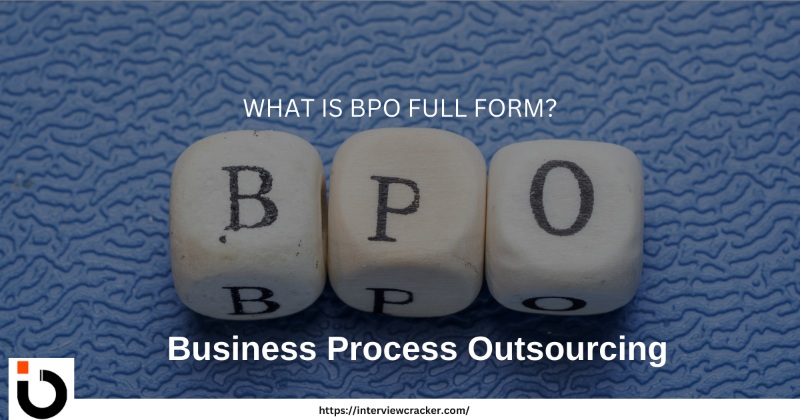What is Cold Calling?
Cold calling is a sales technique where a salesperson or of a company contacts potential customers who have not expressed prior interest or engagement with the company’s products or services.
The purpose of cold calling is to introduce the company’s offerings, create awareness, and ultimately persuade the prospect to take some desired action, such as making a purchase or setting up a meeting.
Here are the top 20 checklist of things to prepare before you start cold calling.
Top 20 Tips for Cold Calling
1. Do Research of your target company
Pre-call preparation must include researching your potential customer. Pre-call research aids in giving you a clearer perspective and a customized message when you begin the sales conversation. You may give calls with value and hold their attention by gathering important information about them. Verify their LinkedIn profile, business website, CRM, social media, etc. This helps you tailor your pitch and establish credibility.
2. Prepare a cold calling Script

Before picking up the phone, it’s essential to craft a well-structured cold calling script. This doesn’t mean reading from a rigid template, but rather having a clear outline that guides the conversation smoothly. A good script includes a brief introduction, a compelling value proposition, qualifying questions, and a strong call to action. It helps you stay focused, sound confident, and handle objections more effectively. With preparation, you’ll be able to personalize your pitch while maintaining consistency across calls.
3. Prepare a Strong Opening Statement
The first 10 seconds will decide whether you are worth talking to or not so you have to differentiate yourself from other Callers.
For example, you can open with a compliment on a recent professional achievement that you may have come across during your research.
4. Set Clear Objectives
Define the purpose of your call – whether it’s to set up a meeting, gather information, or make a sale. This helps you stay on track during the conversation.
5. Focus on Value
Emphasize the value and benefits of your product or service rather than just listing features. Explain how it can solve the prospect’s problems.
6. Practice Makes Perfect
Never and we mean never go into a cold call completely unaware, rehearse what you are going to say and this will lead to better confidence and better performance.
Researching your prospect should be a free cold call ritual by tracking down information about them, you can deliver the calls with value and keep their attention.
No research means you are selfish by showing zero investment in the person on the other end of the phone.
7. Know The Time to Cold Call
Weekday afternoons are generally considered the best time to make cold calls. The majority of the calls will last over 5 minutes and they best occur between 3 to 5 p.m. on Tuesdays or Thursdays.
If the prospect is not available or not free you can ask them for a time which is comfortable for them to talk to you.
8. Use Trigger Events to Initiate Cold Call
The possibility is that if you get in touch with someone soon after they sign a deal with your rival, they won’t respond. By keeping an eye on the publicly available information that appears every day across a range of web platforms, you can spot these perfect times, or trigger events. Utilize tools such as Google Alerts.
9. Open with a Hook
Begin your call with a hook that grabs the prospect’s attention. This could be a relevant statistic, a common pain point, or a thought-provoking question.
10. Modulate Your Tone While You Are Doing a Cold Call
The tone of your voice is very important since you are on a sales call the prospect can’t see your body language so your tone makes up for it.
Without facial expressions and body choice, the only thing you can use to convey your points is your voice and choice of words.
A tip for would-be mirroring: try to match the tone of voice or speech patterns people find comforting.
11. Ask open-ended Questions
You give your prospect more room to respond when you begin your query with “who,” “what,” “where,” “when,” and “how.”
In a two-way interaction like a cold call, you should find out as much as you can about your prospect, their business, and their needs. By inquiring about their feelings, you create more discussion points.

12. Listen Actively
Do not just go talking to them, listening is a very easy way to build trust. This makes a person feel valued and it can allow you to learn more about their needs and concerns rather than just sending out pitches about your product and services.
13. Don’t Provide an Easy Out
You shouldn’t begin by asking, “Is now a bad time?” as your aim is to keep them on the line. Instead of making them want to hang up, maintain using personal statements that will keep them on the line.
14. Handle Objections
Anticipate common objections and prepare responses that address these concerns while keeping the conversation positive.
15. Build Rapport
Establish a genuine connection with the prospect by showing empathy, asking about their challenges, and finding common ground.
16. Keep it Brief
You have 10 seconds to prove your worth and avoid getting hung up on, technically when you are cold calling someone you are intruding in their privacy.
A well Research and engaged conversation improve your value to the prospect, keep the call brief and you will earn their respect.
Respect the prospect’s time by keeping your call concise and focused. Aim to deliver your key points within a few minutes.
17. Personalize Your Approach
Use the prospect’s name, mention relevant details, and tailor your pitch to their specific needs. Personalization demonstrates that you’ve done your homework.
18. Accept Rejections
An undeniable part of cold calling is getting rejected and it is a necessary part Of sales, rejection can get you down but also give you the chance of learning.
The best sales rep will keep a positive attitude, pick up the phone and continue learning from their mistakes.
Other than overcoming rejection do not let defeat or negative thinking get the best of you. Every mistake that you make is a learning opportunity to do better in the job for the future.
19. Follow Up Materials
Prepare any follow-up materials you might need to send, such as brochures, emails, or additional information about your product or service.
20. Track and Analyze Results
Keep records of your calls, outcomes, objections, and successful strategies. Regularly review and analyze your performance to identify areas for improvement.
Remember that cold calling requires patience and resilience. Not every call will lead to an immediate sale, but with practice and refinement of your approach, you can improve your success rate over time.
Use these cold calling tips before you make that next call, and then make a note of the improvement and success you get through following the steps to see which works the best for you and which doesn’t and there is no harm in trying new strategies for continuous improvement.
7 Steps of a Cold Call
1. Introduction
This is the initial phase of the call where you introduce yourself and your company. Make sure to be friendly and professional, stating your name and the reason for your call. It’s important to create a positive first impression and set a friendly tone for the conversation.
2. Engagement
Once you’ve introduced yourself, your goal is to engage the prospect’s interest and attention. Start with a hook or an attention-grabbing statement related to the prospect’s industry or pain points. The engagement step is crucial to keep the prospect interested and willing to continue the conversation.
3. Value Proposition
In this step, you present the value your product or service offers to the prospect. Clearly explain how your offering can address their specific challenges or needs. Focus on benefits and outcomes rather than just listing features. Highlight what makes your solution unique and valuable.
4. Qualifying Question
After presenting your value proposition, ask a qualifying question to determine if the prospect is a potential fit for your product or service. This question helps you gather information about their current situation, pain points, and needs. It also ensures that you’re investing your time in prospects who are more likely to benefit from your offering.
5. Handling Objections
Prospects may have concerns, doubts, or objections at this point. Address these objections empathetically and confidently. Be prepared with responses that demonstrate your understanding of their concerns and provide relevant information to alleviate their doubts. Handling objections effectively can help build trust and move the conversation forward.
6. Next Steps
Assuming the prospect is interested and their objections are addressed, it’s time to discuss the next steps. This could involve setting up a meeting, scheduling a product demo, sending additional information, or any other action that progresses the sales process. Clearly outline the benefits of taking the next steps and guide the prospect toward a positive decision.
7. Wrap-up
the call comes to a close, summarize the key points discussed during the call. Confirm any agreed-upon next steps and ensure that both you and the prospect are on the same page. Thank the prospect for their time and express your enthusiasm about the potential collaboration. Leave a positive impression and maintain a professional tone as you conclude the call.

Cold Calling Scripts & Examples
Creating effective cold-calling scripts requires a balance between providing relevant information and engaging the recipient in a meaningful conversation. While we are showing a basic template of cold calling scripts, keep in mind that customization and personalization are key to success in cold calling. Customize these examples to your specific industry, product, or service for better results. Let us learn with example how to make a cold call ? Script how to make a cold call:
Example Cold Calling Script for Software Sales/B2B Sales:
Introduction: “Hello, [Prospect’s Name]. My name is [Your Name] from [Your Company]. I hope I’m not catching you at a bad time.”
Engagement: “I wanted to briefly introduce our company and a solution we offer that has helped [similar companies or industries] improve [specific result or pain point].”
Value Proposition: “We’ve recently developed [Your Product/Service] which has [mention a key benefit or unique selling point], and I believe it could be of interest to your company.”
Qualifying Question: “Could you share a bit about your current [relevant process or challenge] and if it’s something you’re actively looking to improve?”
Handling Objections: “If I could show you a way to [solve their pain point or achieve their goal], would you be open to exploring this further?”
Next Steps: “I understand your time is valuable. If you’re open to it, I’d love to schedule a brief call or meeting to discuss this in more detail. What would be a convenient time for you?”
Wrap-up: “Thank you for your time, [Prospect’s Name]. I appreciate the opportunity to connect, and I look forward to the possibility of working together.”
Remember, adapt this script based on the context and your familiarity with the prospect’s business
FAQs
How to make successful cold calls? | how to make a good cold call?
Making successful cold calls requires careful preparation and a strategic approach. You can make a good cold call by following below simple steps:
- Start by researching your target audience to understand their needs and pain points.
- Craft an engaging opening statement that highlights the value you can offer.
- Focus on building rapport with your prospect
- Ask open-ended questions to encourage a conversation.
- Actively listen to the prospect’s responses
- Tailor your pitch accordingly
- Demonstrating a genuine interest in solving their challenges.
By taking care of above steps you can make a good cold call.
How many cold calls should I make a day?
A common guideline is to aim for around 50 to 100 calls per day. However, the number of cold calls you should make in a day can vary depending on several factors, including:
- Your sales goals,
- Industry,
- Type of Biz – B2C/B2B
- Target audience, and
- Quality of your calls.
50-100 cold calls allows you to reach a substantial number of potential leads while still maintaining the quality of your interactions. Remember, it’s essential to find a balance between quantity and quality to ensure that each call is well-researched, personalized, and effective.
How long does it take to make 100 cold calls?
On average, a well-prepared and focused cold caller might spend about 2 to 3 minutes on each call, including the time taken for introductions, pitches, and any initial engagement.
Assuming an average of 2.5 minutes per call, making 100 cold calls would take approximately:
100 calls × 2.5 minutes/call = 250 minutes
This translates to about 4 hours and 10 minutes of calling time without considering breaks between calls.
The time it takes to make 100 cold calls can vary based on a few factors, including the efficiency of your calling process, the length of each call, and any breaks you take. So it’s important to find a pace that allows you to maintain the quality of each interaction.
How to convert cold calls to sales? How to make a cold call sales pitch?
Converting cold calls to sales requires a strategic approach and effective communication. Not every cold call will result in an immediate sale. The goal of a cold call is to establish connections, gather valuable insights, and nurture relationships over time. With persistence, empathy, and a strategic approach, you can increase your chances of converting cold calls into successful sales.
How to get sales leads without cold calling?
Many people ask how do you generate leads without cold calling ? Answer is there are several effective ways to generate sales leads without relying solely on cold calling. Here are some alternatives:
- Content Marketing
- Social Media Marketing
- Email Marketing
- Networking Events
- Referral Programs
- Search Engine Optimization (SEO)
- Webinars and Workshops
- Landing Pages and Lead Magnets
- Influencer Partnerships
- Content Syndication
- Social Media Advertising
- Customer Reviews and Testimonials
Remember, a multi-faceted approach is often the most effective. Different strategies can complement each other. The key is to provide value, engage with your audience authentically, and tailor your approach to the preferences of your target market.
Conclusion
These steps provide a structured framework for conducting a successful cold call. However, it’s important to remember that every conversation is unique, and your ability to adapt and tailor your approach to each prospect’s situation will greatly influence your success in cold calling.






